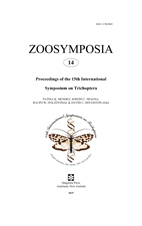Abstract
Aquatic ecosystems can be either permanently wet or be subject to seasonal or intermittent drying. Insect species inhabiting temporally dry streams have evolved behavioural, morphological and/or life history traits to ensure their persistence. The limnephilid caddisfly Micropterna lateralis (Stephens 1837) has a life cycle that is tailored to the temporal dynamics of periodically dry streams where adults usually hatch before drought commences. Their aquatic larvae are, however, also able to survive stream drying, but the mechanisms driving this survival ability have not been studied to date. We conducted an experiment to simulate drying conditions, using samples from a M. laterialis population taken from an intermittent stream in the Spessart Mountains of the central German highlands. The experiment simulated three hydrological conditions: wet, moist and dry. In a first test of our system we compared gene expression profiles of three individuals (one per condition) using Illumina-based Massive Analysis of cDNA Ends MACE-Seq. Our first results show large differences in gene expression between the studied phases with many genes exhibiting gradual up- or down-regulation across the three experimental hydrological conditions. Under drought stress, up-regulation was primarily found in genes controlling production and mobilization of desiccation protectants, mainly sugars, whereas down-regulated genes were related to cuticle organisation and lipid metabolism. These preliminary results give valuable insights into genetic and physiological responses of aquatic insects to stream drying.

